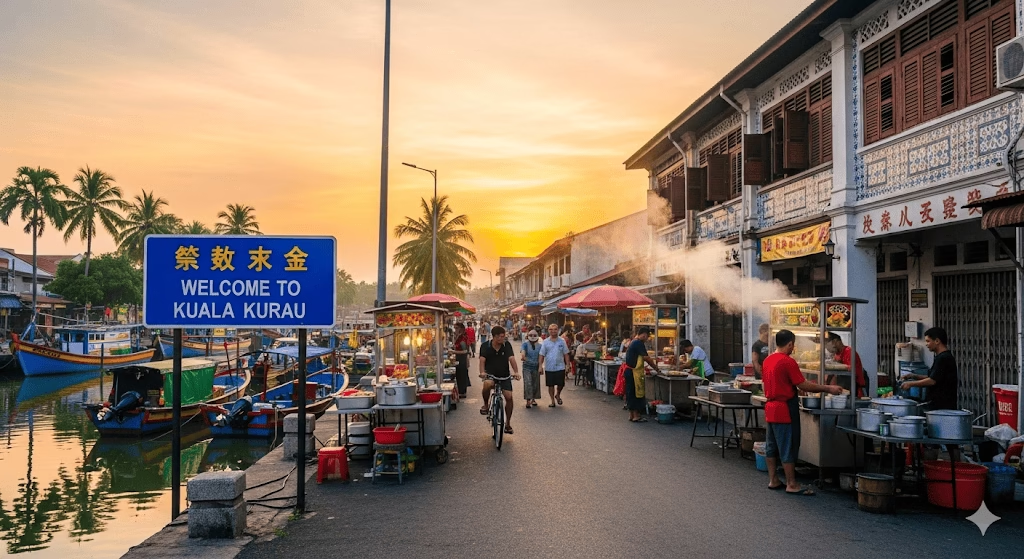Masjid Sultan Abdul Samad KLIA- A Postmodern Islamic Landmark in Selangor

Introduction
Masjid Sultan Abdul Samad, located near Kuala Lumpur International Airport (KLIA) in Sepang, Selangor, is one of Malaysia’s most distinctive modern mosques. Completed in 2000, the mosque represents a blend of spiritual purpose and architectural innovation. Named in honor of the fourth Sultan of Selangor, Sultan Abdul Samad, this mosque serves both the local Muslim community and the thousands of travelers passing through Malaysia’s main airport.
History and Significance
Following the construction of KLIA, new townships and support facilities emerged to cater to airport operations. Recognizing the need for a place of worship and community gathering, the Sultan Abdul Samad Mosque was built a year after KLIA’s opening. It was officiated by Tengku Idris Shah, who later became the Sultan of Selangor.
The mosque is a symbol of progress, faith, and unity — a reflection of Malaysia’s commitment to incorporating cultural heritage into modern development.
Architectural Design and Concept
Designed by the Malaysian firm DBA Arkitek, Masjid Sultan Abdul Samad is inspired by the bunga kantan (torch ginger flower), a local plant known for its beauty and elegance. The mosque’s architecture follows a postmodern Islamic style, characterized by clean lines, geometric precision, and symbolic forms.
Key Features
- Dome Design: The main dome, finished with bluish-glazed tiles, sits prominently atop a sloped roof shaped like an Islamic geometric star.
- Minarets and Smaller Domes: Two elegant minarets flank the main dome, accompanied by eleven smaller domes along the side entrances and ablution areas.
- Natural Lighting: Stained glass clerestory windows at the dome’s base filter natural sunlight, creating floral shadow patterns that shift throughout the day.
- Symbolic Layout: From above, the mosque’s plan resembles the Islamic star and crescent — the crescent forming corridors and verandas that connect functional areas to the main prayer hall.
At night, the illuminated dome shines like a glowing lantern, guiding travelers approaching KLIA, symbolizing light, faith, and guidance.
Interior Design
The interior of the Sultan Abdul Samad Mosque reflects simplicity and grandeur. The main prayer hall features white gypsum walls, intricate blind arches, and a beautifully crafted mihrab and minbar. A grand chandelier suspended beneath the central dome adds elegance to the sacred space.
The mosque’s courtyard (sahn) is designed as a transitional zone between the exterior and the main hall. Surrounded by arcades (riwaqs), it provides a peaceful space for reflection and social interaction before entering the prayer area.
Awards and Recognition
Masjid Sultan Abdul Samad received the Merit Award on Colour in Buildings in 1999, recognizing its harmonious blend of color, design, and symbolism in modern Islamic architecture.
Visiting Information
Address: Masjid Sultan Abdul Samad KLIA, 27, KLIA, Selangor, Malaysia
Established: 2000
Architect: DBA Arkitek
Architectural Style: Postmodern Islamic
Main Features: Bluish glazed dome, geometric layout, stained glass windows, twin minarets
Accessibility: Located near Kuala Lumpur International Airport (KLIA), easily accessible by road or public transport.
Why Visit Masjid Sultan Abdul Samad KLIA?
- Architectural Beauty: A perfect example of contemporary Islamic architecture in Malaysia.
- Peaceful Ambience: A tranquil space for prayer and reflection amid the bustle of an international airport.
- Cultural Significance: A tribute to Sultan Abdul Samad and a representation of Selangor’s Islamic heritage.
- Photographic Appeal: The mosque’s dome, minarets, and landscaped courtyard make it ideal for architectural photography.
Conclusion
Masjid Sultan Abdul Samad KLIA is not just a place of worship but also a symbol of Malaysia’s harmonious fusion of modernity and faith. Its striking architecture, serene surroundings, and proximity to KLIA make it a must-visit landmark for travelers, architecture enthusiasts, and those seeking spiritual solace.
FAQs
1. When was Masjid Sultan Abdul Samad KLIA built?
The mosque was completed in 2000, a year after the Kuala Lumpur International Airport opened.
2. Who was the architect of the mosque?
The mosque was designed by DBA Arkitek, a Malaysian architectural firm.
3. What inspired the mosque’s design?
The design was inspired by the bunga kantan (torch ginger flower), representing natural beauty and cultural identity.
4. Is the mosque open to visitors?
Yes, the mosque welcomes both worshippers and visitors. Modest attire is required, and non-Muslims should avoid visiting during prayer times.
5. How can I get to Masjid Sultan Abdul Samad KLIA?
The mosque is located within close proximity to Kuala Lumpur International Airport and can be reached via shuttle, taxi, or car from Sepang or surrounding areas.















Comments are closed.